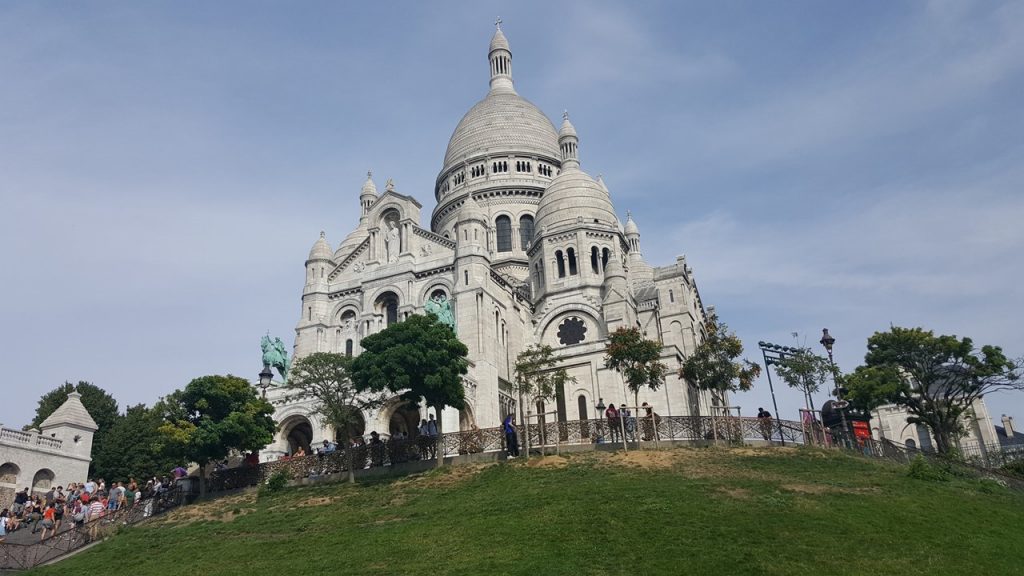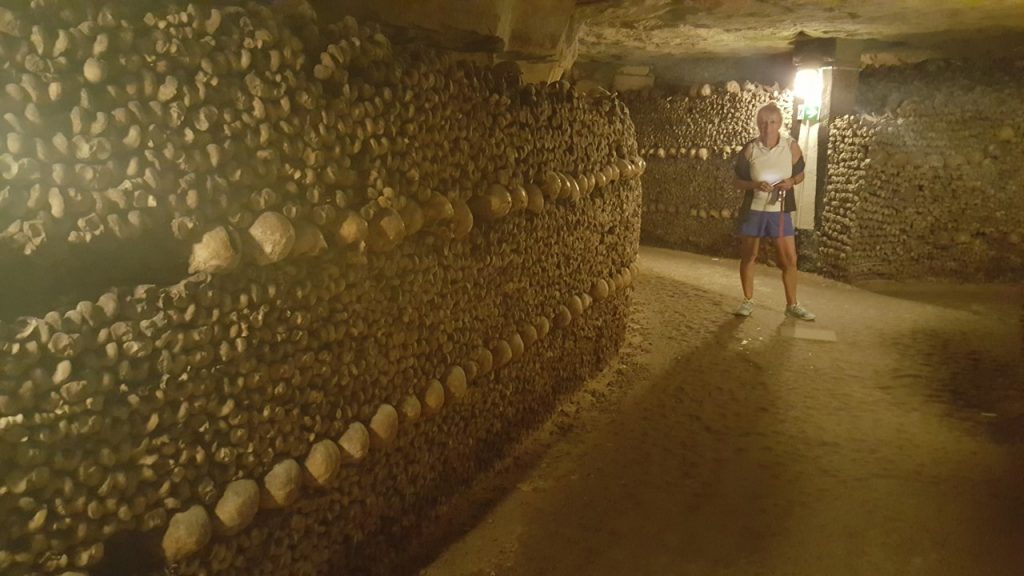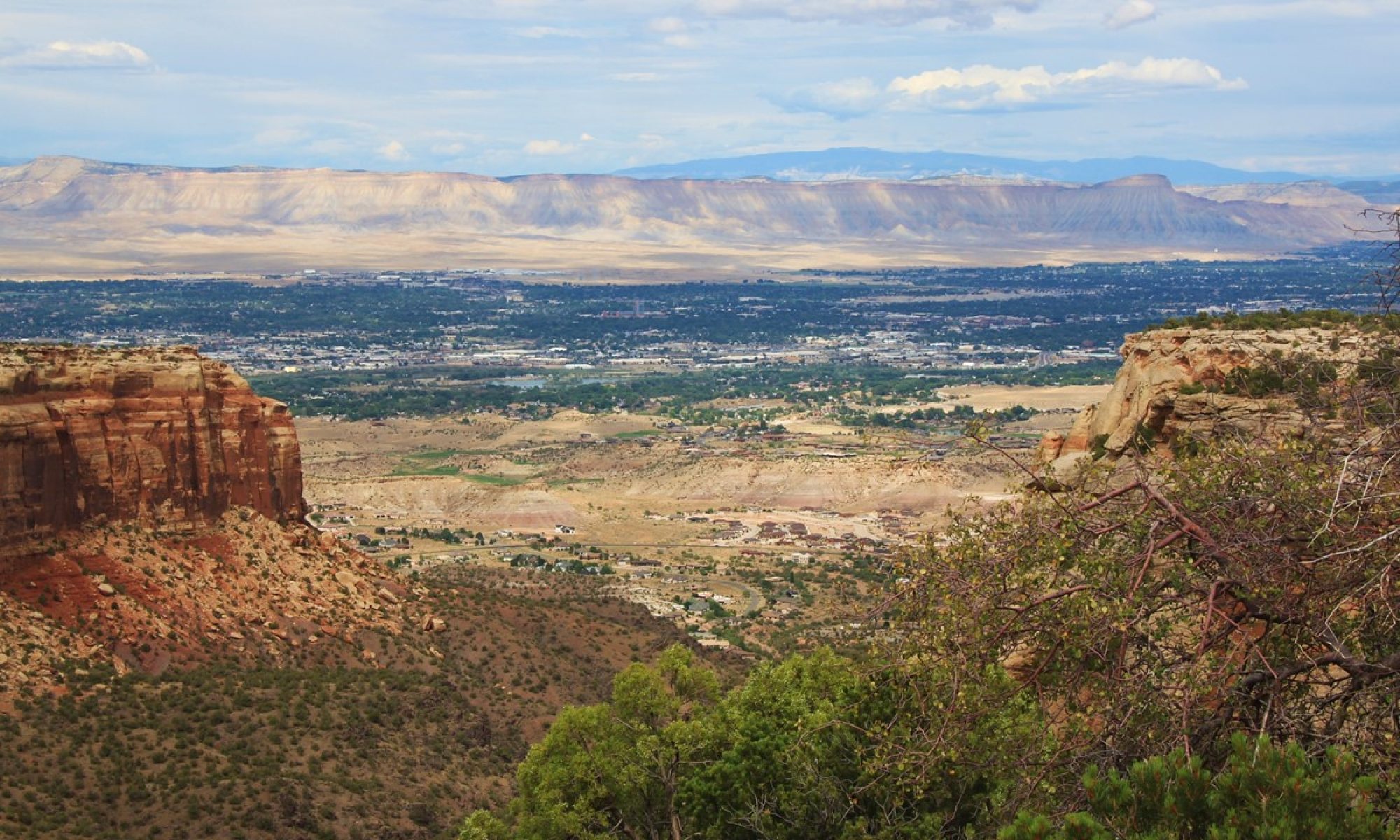We very much like to take trips to go places we haven’t been before, and to see things that we haven’t yet seen. However, we also like to be active, which means we look for trips with bicycling, hiking or multi-sports as the basis of them. We also hate to unpack and repack every day as we adventure our way along, and so, for the first time, we engaged on a riverboat-bicycling trip with the Backroads Bicycling Company, in conjunction with Ama Waterways’ river-boat, for an eight-day trip down the Seine from Paris to the coast at Normandy, and back to Paris. This would allow us to explore a greater portion of the countryside and obviate the need to pack or unpack along the journey. It would also allow us to take in the wonders of Paris, (with a personal 4-days spent there – pre-trip), travel the historic lands of Richard-the-Lion-hearted, learn the history of the Normandy Region, honor the fallen on the French beaches of the English Channel at Omaha on the 75th anniversary-year of D-Day, and wander through the water-lily gardens of Monet and visit the home of Van Gogh. This seemed to meet all of the criteria of my wife and I and our traveling companions, her sister and brother-in-law.
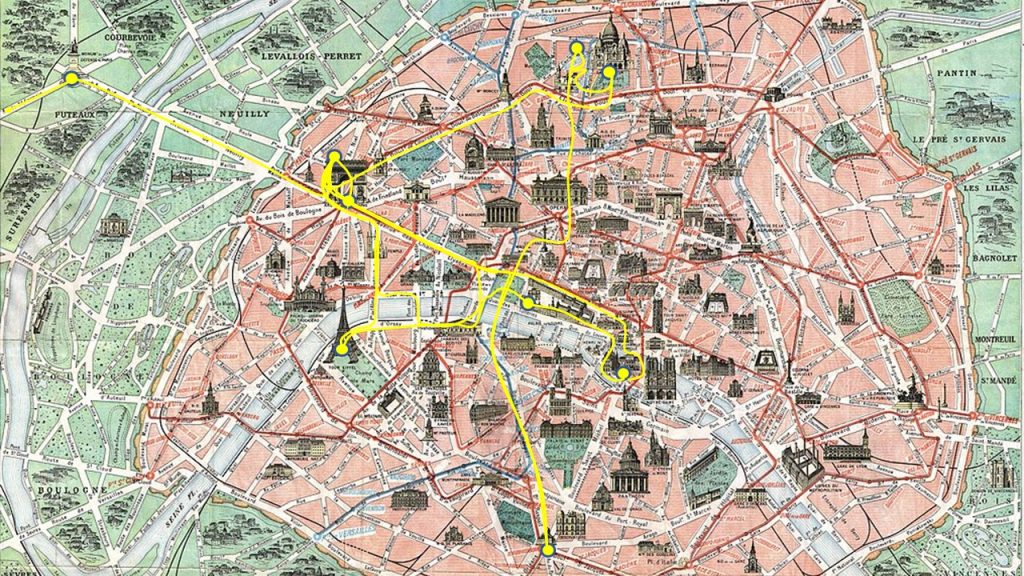
Our adventure began with my wife’s sister and brother-in-law meeting us in Washington, D.C. for our overnight flight out of Dulles International Airport. In order to get us used to “European Travel”, we took the complicated, (but inexpensive), route involving buses and metro-trains from Huntington Station in North Virginia, all the way to the airport – about a 2-hour trip! This, of course, was followed by the typical 2-hour check-in/security/wait/board routine that all international flights require, and then by an 8-hour flight to Paris De Gaulle Airport, arriving Sunday morning, August 25th, 2019. From here, we took a bus to Paris city-center and finally exited the bus across the street from the Arc de Triomphe de l’Étoile (“Triumphal Arch of the Star”) and walked the 2-blocks to our hotel – The Balmoral. Although it was only ~10:00am in the morning, they checked us in, and after a quick clean-up, the four of us set forth to start our exploration of Paris. It seemed obvious that the first place we should explore was the Arc de Triomphe de l’Étoile located at the western end of the Champs-Élysées Boulevard, at the center of Place Charles de Gaulle. This circle used to be named Place de l’Étoile — the étoile or “star” of the juncture formed by its twelve radiating avenues that emanate away from it. The Arc de Triomphe honors those who fought and died for France in the French Revolutionary and Napoleonic Wars, with the names of all French victories and generals inscribed on its inner and outer surfaces. Beneath its vault lies the Tomb of the Unknown Soldier from World War I added in 1920. We found the underground tunnel that took us to its entrance, bought tickets, and climbed the 202 steps to the mezzanine level to enjoy the view, and then the additional 82 steps to the terrace level/roof observation deck. The Arc de Triomphe was designed in 1806 and was inspired by the Arch of Titus in Rome, Italy. It was sanctioned by Napoleon and took ~30 years to construct, being competed in 1836. Napoleon’s ashes were buried there in 1840. It is 164-feet tall, 148-feet wide and 72-feet deep. Three weeks after the Paris victory parade in 1919 marking the end of World War I, Charles Godefroy flew his Nieuport biplane under the arch! After the tour of the Arc, we had a light lunch and began a leisurely stroll southeast down the Champs-Élysées Boulevard past designer stores, until we reached the Grand Palais. From here, we crossed the Seine River on the spectacular Alexander III Bridge and walked back west along the “Riverbank of Invalides” to the bridge Pont de l’Alma with an excellent view of the Eiffel Tower. We then walked up George V Boulevard past Rolls-Royces, Bentleys, Porches and Lamborghinis to return to the Champs-Élysées and our hotel. That evening, we enjoyed a classic Fish & Chips Dinner at a British Pub and discovered a local Supermarket where we bought wine and pate for a late-night snack.
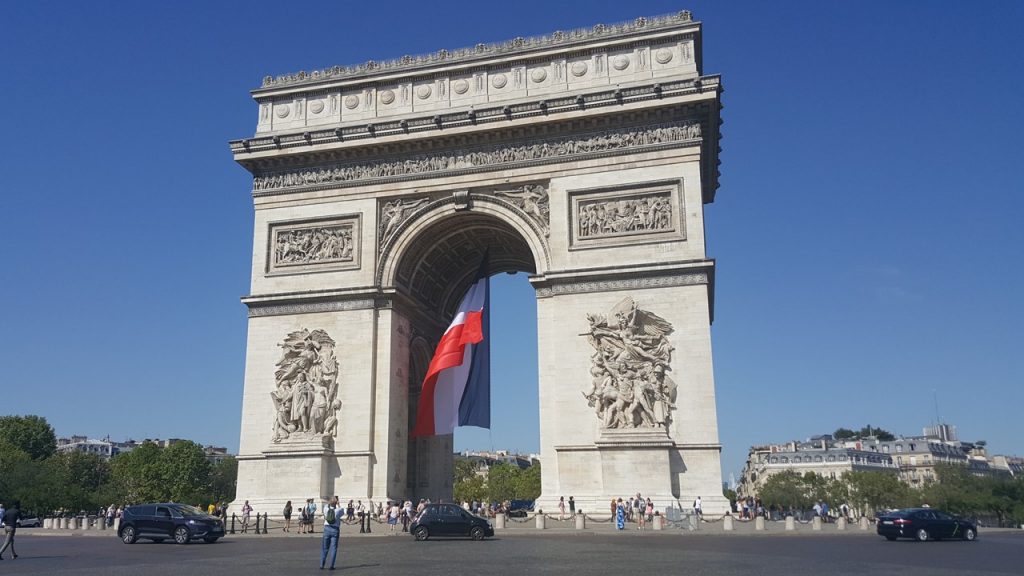
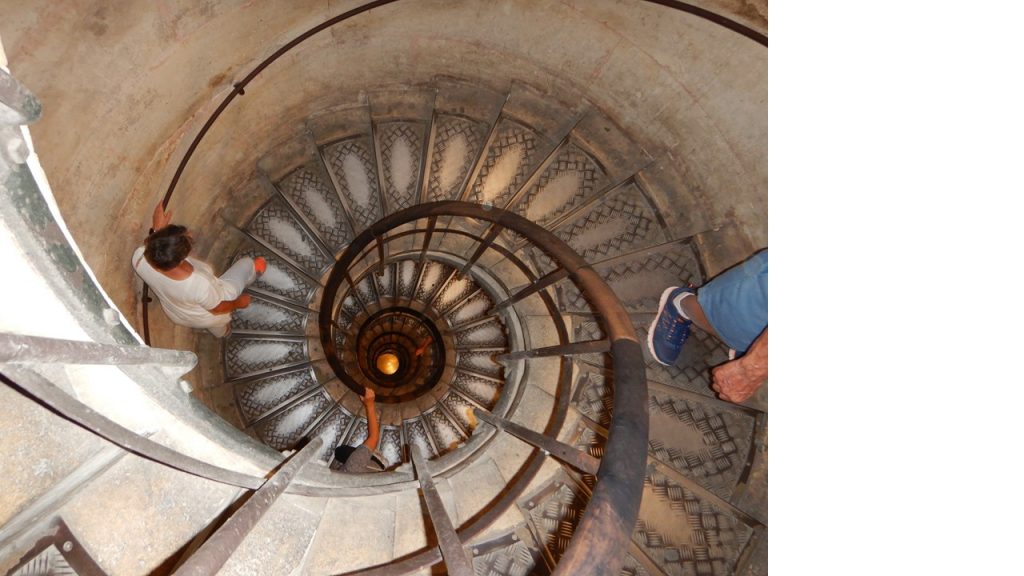

Monday morning, we had a quick breakfast before crossing the Seine and walking to the Eiffel Tower. We had not been able to pre-buy our tickets 24-hours in-advance, and so we took the next best option to avoid any long elevator lines – walk-up! It was 354 steps up to the First Level where there are a food and drink options, and a small historical display. Then it was another 320 steps to the Second Level which offered additional options, an excellent 360-degree views of the city, and access to the elevator to the top. The Eiffel Tower is located on the Champ de Mars and it is named after its engineer, Gustave Eiffel, whose company designed and built the tower. It was constructed in only 26-months, completed in time for the 1889 World’s Fair and is the most-visited paid monument in the world with nearly 7-million visitors ascended it in 2015. The tower is 1,063-feet tall or the same height as an 81-story building, and the tallest structure in Paris. Its base is square, measuring 410-feet on each side. During its construction, the Eiffel Tower surpassed the Washington Monument to become the tallest man-made structure in the world, a title it held for 41 years until the Chrysler Building in New York City was finished in 1930. The top level’s upper platform is 906-feet above the ground – the highest observation deck accessible to the public in the European Union. The Tower also served as a centerpiece for two other World Fairs held in Paris over the next 45 years. After enjoying the view from the top, we took the elevator back to the Second Level, walked the 320 stairs down to the First Level, and then took the elevator down to the Ground Floor. We then crossed the Seine and walked towards the Louvre Museum. Along the way, we decided to stop and visit the nearby Museum de l’Orangerie which is an art gallery of impressionist and post-impressionist paintings located in the west corner of the Tuileries Gardens next to the Place de la Concorde. The museum is the permanent home of eight large Water Lilies murals by Claude Monet, and contains additional works by Cézanne, Matisse, Picasso, Renoir, Rousseau, and others. After touring the Gallery, we strolled through the Tuileries Gardens and associated sculpture parks until reaching The Louvre. The Louvre is the world’s largest and most visited art museum and is housed in the Louvre Palace, originally built as the Louvre castle in the late 12th to 13th century. In 1546 it was converted it into the main residence of the French Kings. In 1682, Louis XIV chose the Palace of Versailles for his household, leaving the Louvre as a place to display the royal collection, During the French Revolution, the National Assembly decided that the Louvre should be used as a museum to display the nation’s masterpieces. The museum then opened in 1793, although it has grown quite a bit since then. We then crossed the Seine River again to see the status of the Notre Dame Cathedral after the horrendous fire that severely damaged it earlier this year. We walked around the entire Cathedral observing the structural supports and massive construction and repair that is underway. After this visit, we ventured underground and caught the Paris Metro-train to arrive back near our hotel. For variety, that night we ate Chinese and finished the evening with a few glasses of French red wine.


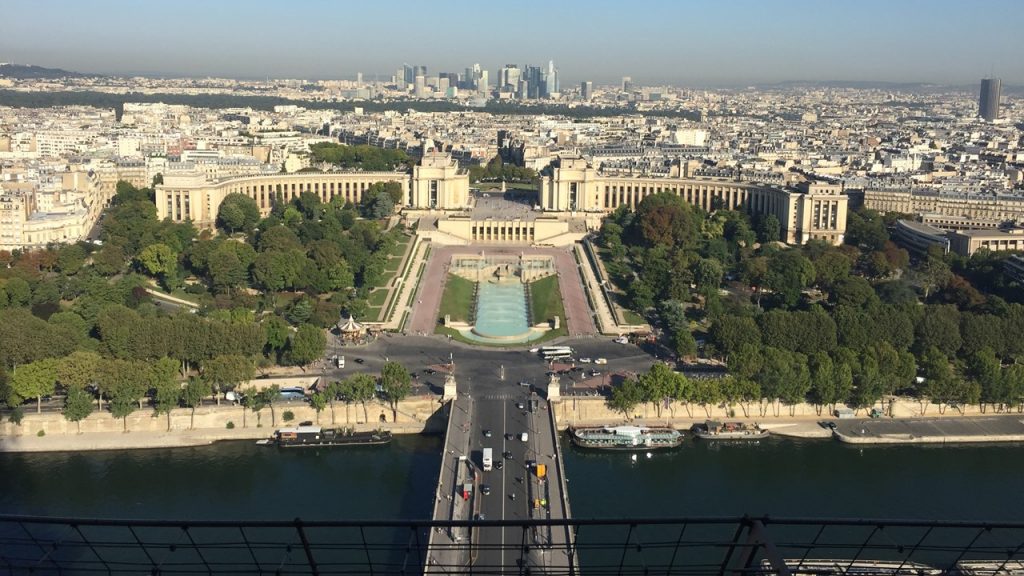
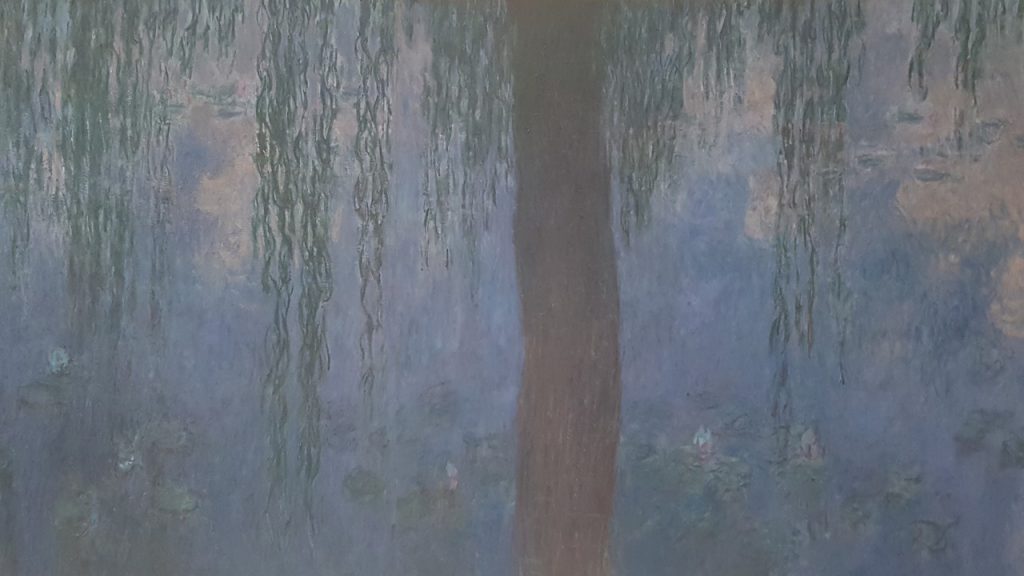
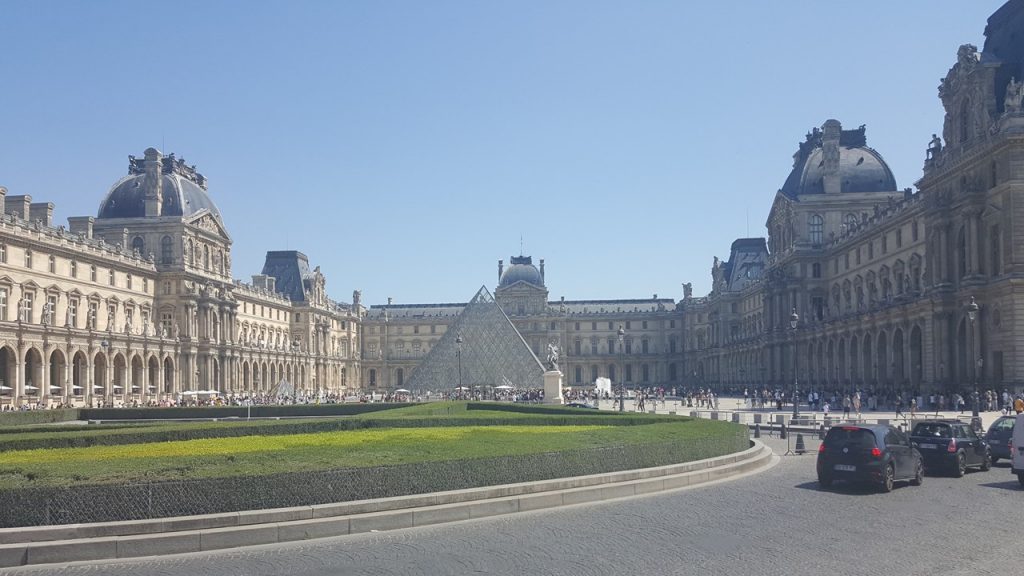

Tuesday, we had reserved for a visit 12 miles outside of Paris to The Palaces of Versailles. The Palace of Versailles was the royal residence of France from 1682, under Louis XIV, until the start of the French Revolution in 1789, under Louis XVI. To get there, we needed to take the Metro-train to La Defense/Port Maillot and transfer to an RER Train that would take us to Versailles. We had already purchased “skip-the-line” tickets, and so entered immediately a bit before our scheduled time of 10:00am. The palace is now an historic monument and UNESCO World Heritage site and is also a very popular place to visit. We started our self-guided tour through the main residences with English audio-phones and spent nearly 2-hours marveling at the amazing Hall of Mirrors, the Royal Opera, and the suites of royal apartments, including those of Louis XV’s two unmarried daughters, Marie Adelaide and Victoire. After the French Revolution, the Palace was stripped of all its furnishings, but today, many pieces have been returned and nearly all the palace rooms have been restored. Then we proceeded to the immense gardens and grounds of Versailles with fountains, canals, and geometric flower beds and groves, laid out by André le Nôtre, and where we were treated to a special “Musical Gardens Day” with dancing fountains and classical music filling the groves. After a lovely lunch under the trees at a restaurant in the gardens, we continued our walking tour to visit the other royal residences located here, including the Grand Trianon and Petit Trianon, residences built in the 1760’s for Madame de Pompadour, (Louis XV’s mistress), and later occupied by Marie Antoinette. By 5:00pm, we were exhausted, and so we headed back to Paris via the train, took showers, went to the “Beer Station” for drinks, and had a light salad dinner before calling it a night.
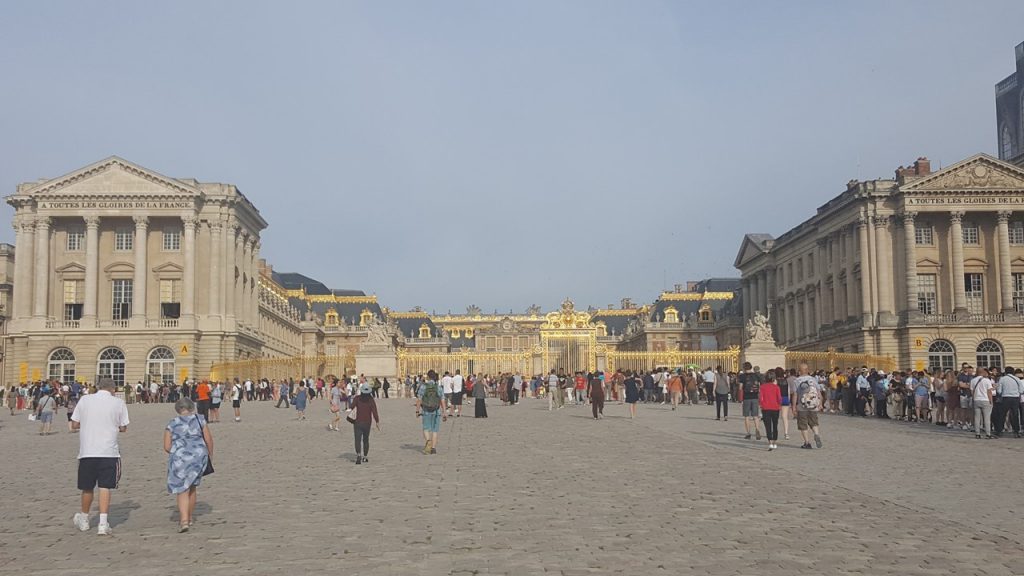

Wednesday was to be our last day on our own in Paris, and we had arranged to have lunch with a couple of young friends who now live just outside the city. The restaurant was in the northern part of the city, and so we decided to take the metro there and visit the nearby Basilica of the Sacred Heart, locally known as Sacré-Coeur Basilica. It is a popular landmark in Paris, and it sits atop the summit of the butte Montmartre, the highest point in the city. Construction on the Basilica began in 1875 and was completed in 1914. Today, it also serves as a base-location for numerous artists and portrait artists. After climbing the hill to the base of the Basilica, we visited the church, and then undertook the climb up 300 narrow spiral staircase stairs to the viewpoint on the church’s spire. From here, all of Paris and the surrounding area was visible, as will as the nearby bell tower. After climbing back down and exiting, we wandered among the artists and did a little shopping while making our way back to the base of the Basilica. From here, we rode the Funicular down the hillside, and started walking toward our lunch restaurant. The restaurant was “Montcalm” and was located further north of the Basilica, requiring a tortuous up-and-down hike to arrive just on time at 1:00pm. Here we met our friends, and the restaurant owners who were childhood friends of theirs. After a lovely French lunch of beef with potato puree and spinach, with a rice pudding desert, we walked back to the Metro and traveled south to Place Denfert-Rochereau. This square is the location of the Paris Catacombs museum and is where the entrance to the underworld is located. It is also frequently the place where demonstrations and protest marches in Paris either start or end. Again, we had bought “skip-the-line” tickets and entered the catacombs at 4:30pm. The Catacomb Tour told the entire history of these catacombs from when the tunnels were created in Roman-times as a quarry for limestone blocks to build the buildings of Rome, through their lost recognition and terrifying fatal collapses in the 1700’s, to the underground ossuaries of approximately 6-million people today. The ossuary extends south from the city’s “Gate of Hell and was created to eliminate the city’s overflowing cemeteries. Serious work began after a 1774 series of gruesome cemetery-wall collapses and a growing concern about disease and unsanitary exposures. From 1786, daily covered wagons transferred remains from most of Paris’ cemeteries to a mine shaft opened near the Rue de la Tombe-Issoire, where the remains were dumped in and a mountain of remains grew. Soon, a group undertook “organizing” the remains – stacking the bones and skulls into “vaults” of geometric and artistic patterns. This The ossuary then remained largely forgotten until it became a novelty-place for concerts and other private events in the early 19th century. It has been open to public visitation since 1874, and although the ossuary makes up only a small portion of the underground tunnels of Paris, they are certainly the most visited. After a ~1.5-mile journey through the tunnels, we exited and began our Metro ride back to our hotel for dinner, and to pack to begin the next (bicycling) portion of our adventure.
